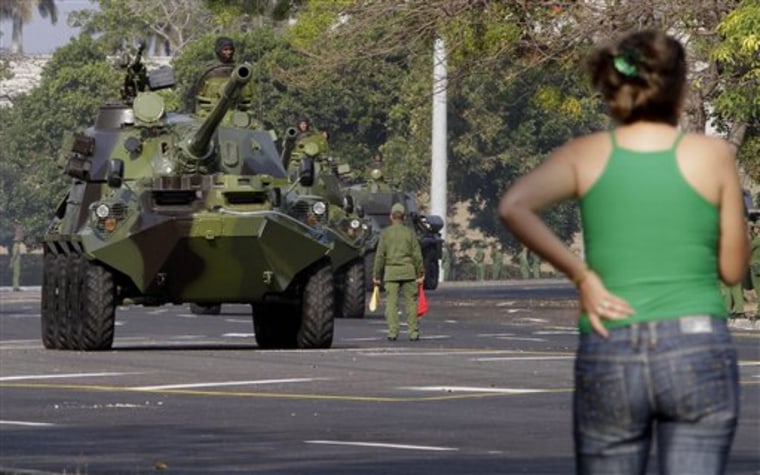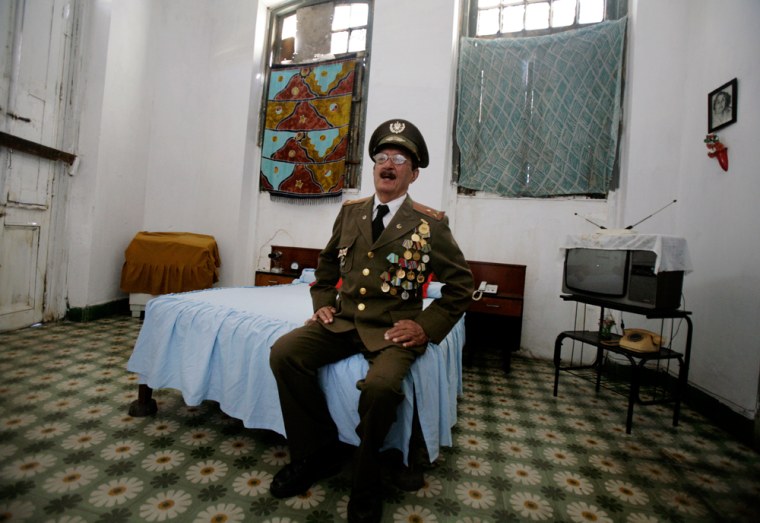Rafael Soldevilla Quesada was on guard duty at Fidel Castro's house when a defense ministry official rushed in with the news: A 1,200-strong invasion force of U.S.-backed exiles had landed at Playa Giron, as the Bay of Pigs is known in Cuba.
The attack was not much of a surprise, Soldevilla recalled 50 years later. Castro himself had warned that a recent bombing raid by planes painted to look like they were part of the Cuban air force was a prelude to invasion. They both rushed, along with others, to defend Giron.
"Fidel said 'What fools they are!'" Soldevilla said. "We knew they were coming."
Faced with a bold challenge to its very existence, Castro's young government sent a hastily mustered defense force that included many who weren't even soldiers. In interviews with The Associated Press, Cubans who fought in the brief battle say that fact was both the key to victory, and the reason Giron still inspires deep pride among many on the island.
The son of a photographer for the revolution, Francisco Manuel Torreiro had no combat experience and was just 15 years old when the exiles landed. But as a member of a local militia with two months training, he was one of those who hopped into trucks and went by caravan to Giron. They arrived to the sound of cannon fire and a B-52 bomber rumbling overhead.
"The first thing I felt was fear," Torreiro recalled. "This was baptism by fire for us."
Torreiro recalled jets firing down at him and other youths.
"They were killing companeros, and in desperation we fired at them with what guns we had."
Torreiro was wounded in the hip, an injury that left him with a limp and ended his brief military career. In an interview in his Havana home, he showed a faded black-and-white picture taken while he was recovering in a Havana hospital.

Toribio Pozos Piloto was a 42-year-old shoe factory worker when officials gathered employees to ask for volunteers.
"They asked for all those who were prepared to defend our country. I immediately raised my hand," Pozos said. "I was ready to go wherever they sent me."
Soldevilla described his immense pride upon arriving at a sugar plant where workers had armed themselves.
"The men were in their revolutionary militia uniforms with Molotov cocktails and whatever weapons they had, ready to burn the factory rather than let the enemy take it," he said.
The exiles were heavily armed and killed 176 Cubans while losing 118 of their own. They were counting on Cubans to rise up and join them, but nothing of the sort occurred. Instead, thousands took up arms to defend the revolution that ousted Fulgencio Batista two years earlier.
"We only had small machine guns, no heavy weapons," recalled Pozos, who is 92 years old and blind today but can still lucidly describe the events of 1961. "When they saw so many Cuban companeros there, they gave up."
More than 1,000 exiles were taken prisoner and later sent back to the U.S. in exchange for money and medicine.
Times grew tough in Cuba during the 1990s, following the loss of support from the Soviet Union.
But Torreiro managed to make a career in photography, documenting the island's history for state-run media. He helped build his own apartment, a small but comfortable home in Havana. And though his wounded hip has continued to bother him throughout his life, he says his time fighting at the Bay of Pigs solidified his commitment to the revolution.
Today Torreiro is retired and sculpts pottery, which he occasionally sells. He still marvels at the Playa Giron victory, and the part it played in preserving the revolution.
"We are here today because in Giron, thousands of Cubans didn't let them make a beachhead," he said. "If they had made that beachhead, it would be a completely different story."
Associated Press writer Peter Orsi contributed to this report.
